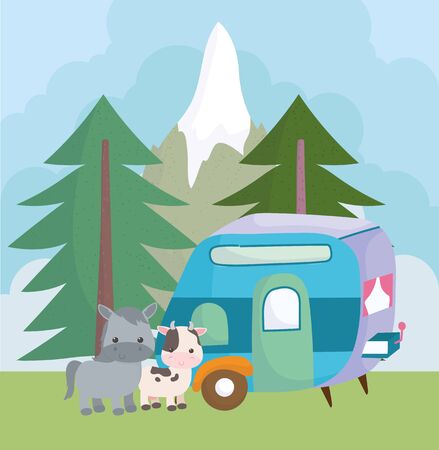Assessing Your Gear After Winter Storage
Spring is finally here, and that means it’s time to dust off your camping gear for new adventures. Before you hit the trail or set up camp, it’s crucial to give all your equipment a thorough once-over. Months in storage—especially over winter—can lead to unexpected wear, damage, or even mold. Start with your tent: unroll it completely and check for any tears, broken zippers, or bent poles. Pay special attention to seams and corners where fabric stress is highest. For sleeping bags, shake them out, look for signs of mildew, and inspect the stitching—cold storage can make insulation clump or lose loft. Don’t forget your backpack; empty every pocket and check straps, buckles, and zippers for fraying or weakness. If you stored smaller essentials like cookware, lanterns, or water filters, inspect for rust, corrosion, or battery leaks. Taking time now to assess your gear means you won’t get caught off-guard by busted gear miles from civilization. Remember: a little prep goes a long way when you’re counting on your kit in the great outdoors.
2. Cleaning and Refreshing Camping Equipment
Once you pull your camping gear out of winter storage, it’s crucial to give everything a thorough cleaning before hitting the trails. This not only extends the life of your equipment but also ensures a safer and more comfortable experience in the great outdoors. Here’s how to tackle common items using popular American cleaning products you’ll find at your local store.
Washing Clothing and Sleeping Bags
Start by washing technical clothing and sleeping bags with a gentle, residue-free detergent like Nikwax Tech Wash or Gear Aid Revivex. Avoid standard laundry detergents as they can break down water-resistant coatings and trap odors. For best results:
- Check care labels for washing instructions.
- Use cold water on a gentle cycle.
- Add an extra rinse to ensure all soap is removed.
- Tumble dry low with tennis balls for sleeping bags to restore loft.
Refreshing Cookware
Your cookware needs attention too! Use Dawn dish soap or Seventh Generation Free & Clear for scrubbing pots, pans, and utensils. For stubborn stains or lingering campfire soot, make a paste with baking soda and water. Let everything air dry completely before packing away to prevent mold growth.
| Item | Recommended Cleaner | Best Practice |
|---|---|---|
| Clothing/Sleeping Bags | Nikwax Tech Wash, Gear Aid Revivex | Gentle cycle, extra rinse, low heat dry |
| Pots/Pans/Utensils | Dawn Dish Soap, Baking Soda | Hand wash, air dry thoroughly |
| Hydration Systems | Mild Dish Soap, White Vinegar | Sterilize with vinegar solution, dry upside down |
Airing Out Tents and Backpacks
Unfold tents and backpacks outside on a sunny day. Brush off any loose dirt, then wipe down surfaces with a damp cloth and mild soap (like Dr. Bronner’s Pure-Castile Liquid Soap). Set up tents fully to let them air out—this helps eliminate musty smells from months in storage.
Pro Tip:
If you notice mildew spots on fabric or tent seams, mix one part white vinegar with four parts water in a spray bottle. Lightly mist the area, scrub gently, and allow it to sun-dry—sunlight is nature’s best disinfectant!
Final Steps Before Packing Up:
- Double-check that every item is bone-dry to avoid mold growth during future storage.
- Treat zippers with silicone spray (found at most hardware stores) for smooth operation all season long.
- Inventory your gear as you go—make notes on anything that needs repair or replacement before your next trip!
Caring for your gear now means fewer surprises when adventure calls. A little prep goes a long way toward worry-free spring camping across America’s wild places.

3. Testing and Repairing Key Items
Before you hit the trail for your first spring camping trip, it’s crucial to make sure your gear is field-ready. Here’s a step-by-step breakdown to help you test and repair essential items:
Step 1: Pitch Your Tent at Home
Set up your tent in your backyard or living room. Check for missing stakes, bent poles, or torn mesh. Pay attention to zippers—these are notorious for sticking after storage. If you find any rips or holes, patch them using a tent repair kit or seam sealer. Don’t forget to check the rainfly and guy lines for damage or mildew.
Step 2: Test Your Stove
Connect your camp stove to its fuel source and light it up outdoors. Make sure all burners ignite evenly and there are no leaks—listen for hissing sounds or smell for gas. Clean the burners if the flame is weak or uneven, and replace O-rings or gaskets if necessary. For canister stoves, double-check that the threads aren’t stripped and connections are secure.
Step 3: Inspect Lanterns and Headlamps
Install fresh batteries or fully charge any rechargeable lanterns and headlamps. Turn them on to ensure they still function and check all brightness settings. Replace bulbs if needed and clean out dust from battery compartments. For fuel lanterns, inspect mantles for tears and test ignition.
Step 4: Clean and Test Water Filters
If you use a pump or gravity water filter, backflush according to the manufacturer’s instructions to clear out residue from last season. Inspect hoses and seals for cracks or mold growth, and make sure all parts fit snugly without leaks. If you use chemical treatments, check expiration dates before packing them up.
Step 5: Make Repairs Before You Go
If you discover any broken parts or worn-out gear during your checks, fix them now—not at the campsite. Order replacement parts online or visit your local outdoor store so everything is ready before your adventure begins.
Taking these steps ensures that your gear won’t let you down when you’re miles away from home—and gets you into the right mindset for a safe, hassle-free start to spring camping season.
4. Restocking Consumable Supplies
After months in storage, your camping essentials need a serious checkup before heading out for spring adventures. Many critical items are consumables—used up or expired after last season’s trips or simply degraded over winter. Don’t risk running out of fuel on a cold night, dead flashlight batteries in the dark, or stale snacks on the trail. Use this practical checklist to restock and refresh your gear so you’re ready for anything the wild throws at you.
A Spring-Ready Checklist for Key Consumables
| Item | What to Check | Popular U.S. Brands/Types |
|---|---|---|
| Fuel | Check canisters for leaks, rust, or low levels. Refill or replace if half empty. | Jetboil, Coleman propane, MSR IsoPro |
| Batteries | Test all headlamps, lanterns, GPS units; replace as needed (consider lithium for longer shelf life). | Energizer, Duracell, Panasonic Eneloop (rechargeable) |
| Bug Spray | Confirm expiration date and fullness. Look for DEET or natural alternatives. | OFF!, Sawyer Picaridin, Repel Lemon Eucalyptus |
| First Aid Supplies | Restock bandages, antiseptics, pain relievers, allergy meds. Toss expired items. | Adventure Medical Kits, Band-Aid, Neosporin |
| Trail Snacks | Toss old bars and nuts. Pack fresh non-perishables with protein & energy. | Clif Bar, RXBAR, KIND Bars, Jack Link’s Jerky, Planters Trail Mix |
Tactical Restock Tips
- Store extra batteries in waterproof bags—moisture kills them fast outdoors.
- If using refillable fuel bottles, label with last fill date and keep upright during transport.
- Add antihistamines and tick removers to your first aid kit—spring means bugs are back!
Final Gear Check Before You Roll Out
A solid spring gear reset means fewer surprises in the field and more time enjoying America’s great outdoors. Make your restock a habit every year—your future self will thank you when you’re warm by the fire, bite-free under the stars, and fueled up for adventure.
5. Updating Your Camping Safety Kit
After months in storage, your camping safety kit deserves a serious check-up before you hit the trails this spring. Start by emptying your first aid kit and inspecting every item for expiration dates, damage, or signs of moisture. Replace any expired medications, ointments, or bandages—don’t take chances with old supplies when you’re miles from help.
Now’s the time to update your emergency gear for the season. Pack allergy medications if pollen is high in your area, and add insect repellent and tick removers for springtime bugs. Consider throwing in a thermal blanket and rain poncho; spring weather can turn fast, especially in places like the Rockies or Pacific Northwest.
Review your flashlight batteries and swap out any that look corroded or weak. Add a backup power bank for your phone, making sure it’s fully charged before every trip. If you camp in bear country or snake-prone areas, include specific gear like bear spray or snake bite kits as needed.
Don’t forget local emergency contact information! Print out updated numbers for nearby ranger stations, local hospitals, and park services—you can’t always count on cell coverage deep in the woods. Tuck these details into a waterproof bag within your kit.
Lastly, make sure everyone in your group knows where the safety kit is stored and how to use its contents. A five-minute review around the campfire could make all the difference if an emergency strikes out there. Stay sharp, stay safe—and make every adventure count.
6. Gearing Up for American Spring Weather
Spring in the U.S. is famous for being unpredictable—one moment you’re basking in sunshine, the next you’re caught in a sudden downpour or chilly breeze. Whether you’re heading to the Pacific Northwest, the Appalachian Mountains, or the deserts of the Southwest, smart packing is your best defense against Mother Nature’s mood swings.
Pack Flexible Clothing Layers
The key to comfort is layering. Start with a moisture-wicking base layer to keep sweat off your skin. Add an insulating mid-layer like a fleece or lightweight puffer jacket for warmth. Top it all off with a breathable, waterproof outer shell. This system lets you adjust your outfit as conditions change—just peel off or add layers as needed.
Don’t Forget Reliable Rain Gear
Rain showers can roll in unexpectedly during spring camping trips. Invest in a high-quality rain jacket and packable rain pants. Look for gear with taped seams and adjustable hoods for maximum protection. Stash some extra dry socks and quick-dry towels too—nothing ruins a trip faster than soggy feet.
Region-Specific Essentials
Spring weather looks different across America, so tailor your gear list to your destination:
- Pacific Northwest: Waterproof boots and gaiters are a must for muddy trails.
- Southeast: Pack bug spray and a head net—mosquitoes love spring humidity.
- Rocky Mountains: Include insulated gloves and beanie; late snowstorms are common.
- Southwest Deserts: Bring sun protection: wide-brim hat, UPF-rated clothing, and extra water bottles.
No matter where your adventure takes you, prepping for unpredictable spring weather means you’ll stay safe, dry, and ready to enjoy every wild moment out there.

